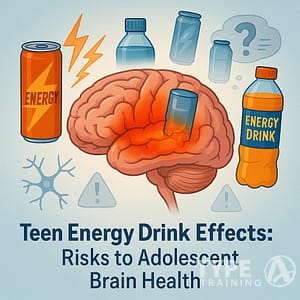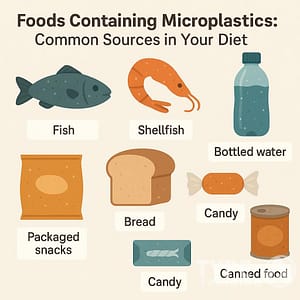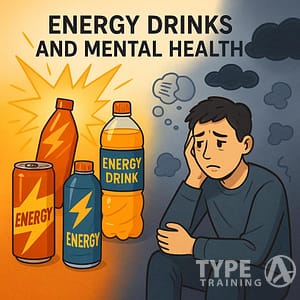Finding the right nutrition services can feel overwhelming when you’re trying to improve your health or manage a medical condition.
Nutrition services range from government assistance programs like SNAP and WIC to professional counseling, meal planning, cooking classes, and specialized support for seniors and people with chronic conditions.
These services help millions of Americans access healthy food and learn how to make better dietary choices.

Popular posts:
You might need different types of nutrition support depending on your situation.
If you’re struggling to afford groceries, federal programs can provide food assistance.
If you want to lose weight or manage diabetes, working with a nutritionist offers personalized guidance.
Some people benefit from group education classes, while others need one-on-one counseling.
Whether you’re looking for emergency food assistance, want to learn cooking skills, or need help managing a health condition through diet, there are services designed to help you succeed.
Key Takeaways
- Government programs provide food assistance to eligible individuals and families who need help accessing nutritious meals.
- Professional nutrition counseling offers personalized meal planning and dietary guidance for weight management and health conditions.
- Community programs include cooking classes, nutrition education, and specialized services for seniors and other groups with unique needs.
Overview of Nutrition Services

Nutrition services include food assistance programs, education, and counseling.
These programs help people access healthy food and learn about proper diet.
The USDA manages most federal nutrition programs that serve millions of Americans each year.
Defining Nutrition Services
Nutrition services provide food access and educational support to prevent health problems.
They work across places like schools, health centers, and communities.
You can get food assistance through programs like SNAP and WIC.
You might receive nutrition counseling from trained professionals.
Some services offer meal planning and cooking classes.
Others provide grocery store tours to teach smart shopping.
Food distribution programs deliver meals directly to people who need them.
Key service types include:
- Food assistance programs
- Nutrition education and counseling
- Meal planning and cooking instruction
- Community food distribution
Importance of Access to Nutrition Support
Many Americans struggle to get enough healthy food, even though the country has advanced food systems.
Food insecurity affects people from all backgrounds and income levels.
Nutrition support helps prevent serious health problems.
When you eat better, you lower your risk of diabetes, heart disease, and other conditions.
Children who get proper nutrition do better in school.
Food assistance programs serve one in four Americans each year.
These programs help families stretch their food budgets and teach people how to make healthy choices with limited money.
Access to nutrition support can lower healthcare costs and help communities stay stronger.
Role of USDA in Nutrition Services
The USDA runs nutrition programs through the Food and Nutrition Service (FNS).
This agency manages 16 different federal nutrition assistance programs.
FNS works with state and local groups to deliver services.
The agency partners with schools, community centers, and health departments.
These partnerships help reach people where they live and work.
Major USDA nutrition programs include:
- Supplemental Nutrition Assistance Program (SNAP)
- National School Lunch Program
- Special Supplemental Nutrition Program for Women, Infants, and Children (WIC)
- Food distribution programs
The USDA also creates dietary guidelines based on scientific research.
The Center for Nutrition Policy and Promotion develops eating recommendations for all Americans.
These guidelines help people understand what foods to choose for better health.
Federal Nutrition Assistance Programs
The federal government runs 16 nutrition assistance programs that serve one in four Americans each year.
These programs include SNAP for food purchases, WIC for pregnant women and young children, and school meal programs for students.
Supplemental Nutrition Assistance Program (SNAP)
SNAP helps low-income families buy healthy food at grocery stores and approved retailers.
The program used to be called Food Stamps but changed its name in 2008.
You receive benefits on an Electronic Benefits Transfer (EBT) card.
This card works like a debit card at most grocery stores.
Eligibility Requirements:
- Income at or below 130% of the federal poverty level
- Asset limits in most states
- Work requirements for certain adults
The average monthly benefit is about $125 per person.
Families with children, elderly members, or disabled individuals may qualify for higher amounts.
You can use SNAP benefits to buy most foods for home preparation.
You can’t buy alcohol, tobacco, vitamins, or hot prepared foods with SNAP benefits.
Special Supplemental Nutrition Program for Women, Infants, and Children (WIC)
WIC provides nutrition support for pregnant women, new mothers, and children under age five.
The program focuses on families with the highest nutritional needs.
WIC Benefits Include:
- Specific healthy foods like milk, eggs, and whole grains
- Nutrition education and counseling
- Breastfeeding support
- Health care referrals
You must meet income guidelines and have a nutritional risk factor.
A healthcare professional determines if you qualify based on medical or dietary needs.
WIC serves about 6.2 million people each month.
The program gives you vouchers or an EBT card for approved foods only.
Unlike SNAP, WIC limits which foods you can buy.
The program targets nutrient-dense foods that support healthy pregnancy and child development.
Child Nutrition Programs
These programs provide meals and snacks to children in schools and childcare settings.
The National School Lunch Program and School Breakfast Program are the largest.
Main Child Nutrition Programs:
- National School Lunch Program – Free or reduced-price lunches
- School Breakfast Program – Morning meals at schools
- Child and Adult Care Food Program – Meals at daycare centers
- Summer Food Service Program – Meals during school breaks
Children from families with incomes at or below 185% of poverty level qualify for free or reduced-price meals.
Schools receive federal funding to cover meal costs.
These programs serve over 30 million children daily during the school year.
Summer programs help feed children when school is not in session.
Meals must meet federal nutrition standards.
Schools provide balanced meals with fruits, vegetables, whole grains, and low-fat dairy products.
Community and Emergency Nutrition Services
Communities provide food help through emergency programs, farmers markets, and local food sharing systems.
These services make fresh food available when people need it most.
Emergency Food Assistance Programs
Emergency food programs help when you face sudden food needs.
Food pantries give free groceries to families who qualify based on income.
The Community Services Block Grant supports projects to reduce poverty.
These programs help homeless people, older adults, and migrant workers get food.
SNAP provides monthly benefits on an EBT card.
You can use these benefits at most grocery stores and some farmers markets.
WIC serves pregnant women, new mothers, and young children.
This program gives specific foods like milk, eggs, and cereal.
During disasters, child nutrition programs adapt quickly.
They provide meals in emergency shelters and help evacuated families get food benefits right away.
Senior nutrition programs change their services during emergencies.
They find new ways to deliver meals safely to older adults who need them.
Role of Farmers Markets in Nutrition Support
Farmers markets help you buy fresh fruits and vegetables in your neighborhood.
Many markets now accept SNAP benefits through EBT cards.
Some farmers markets offer double value programs.
These programs match your SNAP dollars so you can buy twice as much fresh food.
Markets often locate in areas where grocery stores are hard to find.
This helps families access healthy food close to home.
Senior benefits programs give older adults vouchers for farmers markets.
These vouchers help seniors buy fresh produce they might not afford otherwise.
Many markets offer cooking classes and nutrition education.
You learn how to prepare the fresh foods you buy.
Local Food Distribution Initiatives
Food banks collect donated food and give it to local pantries.
These pantries then share the food with families in your community.
Mobile food pantries bring groceries directly to neighborhoods.
They visit schools, churches, and community centers on set days each month.
Community gardens let neighbors grow food together.
You can learn gardening skills while growing fresh vegetables for your family.
Meal delivery programs bring cooked food to people who can’t leave home.
Meals on Wheels serves older adults who need this help.
Some programs focus on special dietary needs.
Liquid nutrition programs serve people who can’t eat solid food due to medical conditions.
Local organizations partner with schools and workplaces.
They set up food distribution sites where families can pick up groceries easily.
Nutrition Services for Older Adults and Special Populations
Older adults have access to federally funded nutrition programs that serve nearly one million meals daily through congregate settings and home delivery.
These programs also extend specialized services to Native American communities with culturally appropriate food options.
Congregate Meal Programs
Congregate meal programs serve you nutritious meals in group settings like senior centers, faith-based facilities, and community locations.
You can access these services if you’re 60 or older, along with your spouse of any age.
These programs provide more than just food.
You’ll receive meals that meet one-third of your daily nutrition needs while following current Dietary Guidelines for Americans.
Key Benefits:
- Social interaction and friendship opportunities
- Health screenings and wellness activities
- Nutrition education from registered dietitians
- Access to transportation and other community services
Recent survey data shows strong results.
74% of participants say their health improved because of the program.
87% rate the meals as good or excellent.
You’ll also find volunteer opportunities during meal times.
The programs protect against malnutrition, which can lead to shorter life expectancy and higher disease rates.
Home-Delivered Meal Services
Home-delivered meals bring nutrition directly to your door if you cannot easily leave your home.
These services help you maintain independence while aging in place.
Volunteers or staff deliver your meals and provide wellness checks during each visit.
This contact helps reduce isolation and ensures someone notices if health concerns arise.
Program Features:
- Nutritious meals meeting dietary guidelines
- Regular social contact with delivery volunteers
- Information about other available services
- Support for homebound older adults
Survey results show the program’s effectiveness.
85% of participants eat healthier because of home-delivered meals.
93% feel the program helps them live independently.
58% of participants say these meals provide at least half of their daily food.
The average participant age is 78.6 years, and 63% live alone.
Nutrition Support for Native American Communities
Native American communities receive specialized nutrition services through tribal organizations under the Older Americans Act.
These programs adapt services to meet cultural preferences and traditional food practices.
Tribal nutrition programs can serve meals in community centers, elder centers, and through home delivery on reservations.
You receive culturally appropriate foods that respect traditional dietary practices while meeting federal nutrition standards.
Unique Program Elements:
- Traditional and culturally relevant foods
- Services delivered in native languages when needed
- Integration with tribal health and social services
- Support through the Nutrition Services Incentive Program
The programs receive federal funding plus additional support through USDA food commodities.
This helps tribal organizations serve more meals and reach more community members.
Tribal programs often face unique challenges like remote locations and limited transportation.
Many adapt by using mobile meal delivery and partnering with other tribal services.
Nutrition Education and Counseling
Nutrition education and counseling services provide both group learning opportunities and one-on-one support to help you make healthier food choices.
These programs often work alongside food assistance to create complete support systems.
Group-Based Nutrition Education
Group-based nutrition education brings people together to learn about healthy eating. These sessions usually happen in clinic waiting rooms, community centers, or schools.
Trained counselors or health volunteers lead these classes. They often use visual aids—think charts, pictures, or even food models—to help make things clearer.
Common topics include:
- Basic nutrition facts
- Reading food labels
- Meal planning on a budget
- Managing health conditions through diet
It’s nice because you can pick up tips from other people’s questions and stories. Plus, group sessions tend to be more affordable and reach more folks.
The information comes from science, but it’s also practical. You walk away with tips you can actually use in your day-to-day life.
Individual Nutrition Counseling
Individual nutrition counseling gives you one-on-one help with your food and health needs. A nutrition counselor sits down with you and talks about what you eat and how you might tweak things for the better.
Your first visit usually takes about an hour. The counselor looks at your meals, sleep habits, and how much you move around.
The counselor will assess:
- Your current eating patterns
- Health conditions or medications
- Lifestyle factors
- Personal food preferences
This approach works especially well if you have specific health risks or chronic illnesses. You get advice that actually fits your life, not just generic tips.
Nutrition education always comes up during counseling sessions. Your counselor teaches you about topics that connect with your health needs—nothing too off-base.
Integrating Nutrition Education with Food Assistance
Many nutrition education programs team up with food assistance programs. This combo tackles both food access and nutrition knowledge at once.
The USDA runs programs that offer food help alongside nutrition education. These programs reach people from birth all the way through adulthood.
This approach includes:
- Teaching healthy cooking with foods you actually have
- Showing how to stretch food benefits
- Connecting families to local food resources
- Supporting community health programs
When you put nutrition education and food assistance together, it just feels more practical. You get to learn ways to eat well using the foods and resources you really have.












